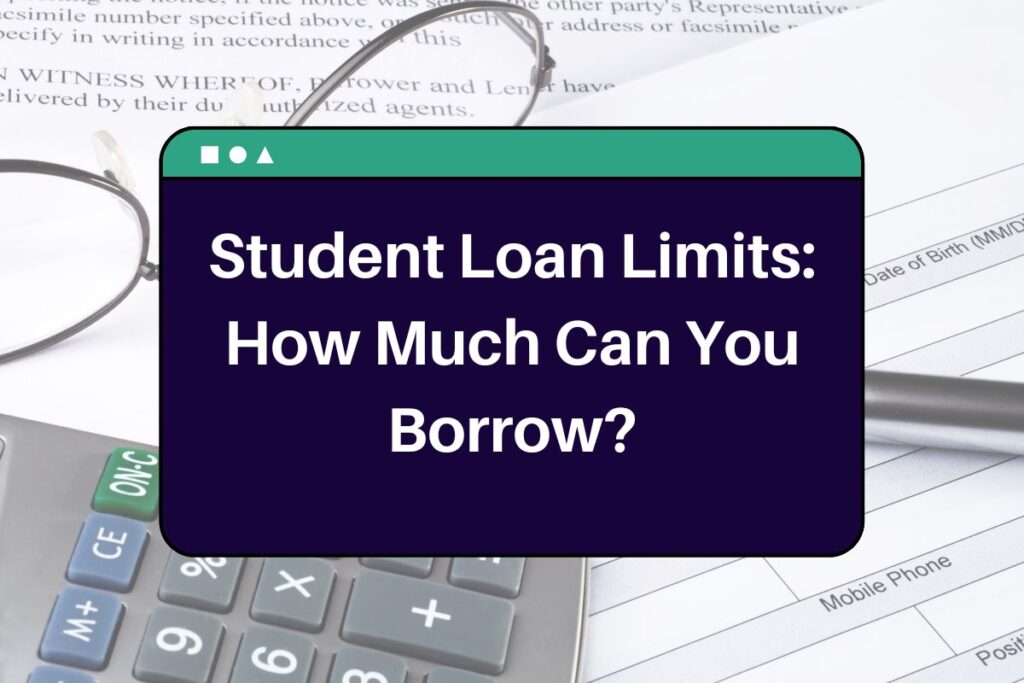Managing the academic finances on your own is daunting. Though the Federal Student Aid program is designed for eligible students can get a specific loan amount. But the payment is not unlimited. The factors that affect the student loan limit are the dependency status and years spent in school. However, the loan can be helpful for them to manage the academic fees, food, travel, and accommodation expenses.
Student Loan Limits
Such a loan has to be paid back with a certain interest when your education is completed. That’s why it is important to understand the borrowing limits and what happens when you exceed the duration. The students must create a repayment plan or apply for financial relief programs, which are designed for the welfare of the citizens. The sooner you know about this, the better you can create a repayment plan.
The graduate and undergraduate students have a definite loan cap that is $31000 is the total amount that the dependent undergraduate students can take. Whereas independent students can receive up to $57500. The graduate and professional students can apply for the Direct PLUS loans, but their interest rate is higher.
If you have already reached the loan limit and you still need to borrow a larger amount, then you can consider taking scholarships or applying to different student aid programs. Explore the forgiveness and repayment plans that are provided by the Government to avoid struggling with repayment.
Student Loan Overview
| Article On | Student Loan Limits |
| Category | Finance |
| Concerned Authority | Federal Student Aid |
| Beneficiary | Undergraduate, Graduate, Professional students, and parents of undergraduate students |
| Official Website | studentaid.gov |
What is Meant by a Student Loan in the United States?
Considering the academic and cost of living expenses, the Government has started a student loan program. The financial burden can impact the regular studies of the students, thus, the Government has started this provision. There is a specific duration under which the amount is passed.

Types of Federal Student Loans
More than 42 million students were reported to register for the loan last year. This number is increasing as the number of students is also increasing gradually. Considering their financial status, they can select one of the below-discussed loans:
1. Direct Subsidized Loan
The undergraduate students are eligible to get the loan amount of upto $5500, depending on grade level and dependency status.
2. Direct Unsubsidized Loan
Graduate, undergraduate, and professional students can get a loan upto $20500 depending on grade level. Note that the subsidized amount will be subtracted if it is received for the same period.
3. Direct PLUS Loans
Parents who borrow money for their undergraduate students are eligible. Graduate or professional students are also eligible. If the loan applicant is already receiving other financial aid, then that particular amount will be subtracted, and a maximum amount will be provided. The cost is based on the attendance that is provided by the school.
4. Direct Consolidation Loans
Anyone with eligible federal student loans who wants to combine any number of those loans into a single loan.
The borrowers can select a loan type and can check the limits from the next section.
Student Loan Limits
The loan limit for the dependent students is according to the criteria that their parents are unable to obtain PLUS loans. And for the independent students, the loan limit is according to the criteria that the parents of dependent and undergraduate students are unable to obtain PLUS loans.
| Year | Dependent Students | Independent Students |
| 1st yr UG annual loan limit | $5500 and $3500 of this amount may be in subsidized loans. | $9500 (not more than $3500 of this amount may be in the subsidized loans) |
| 2nd yr UG annual loan limit | $6500 ($4500 of this amount may be in subsidized loans) | $10500 (no more than $4500 of this amount may be in subsidized loans) |
| 3rd yr and beyond UG annual loan limit | $7500 per year (no more than $5500 of this amount may be in subsidized loans) | $12500 (no more than $5500 of this amount may be in subsidized loans) |
| Graduate or Professional student annual loan limit | Not Applicable (all graduate and professional degree students are considered independent) | $20500 (unsubsidized only) |
| Subsidized and unsubsidized aggregate loan limit | $31000 (no more than $23000 of this amount may be in subsidized loans) | $57500 for undergraduates (no more than $23000 of this amount may be in subsidized loans)$138500 for graduate or professional students (no more than $65500 of this amount may be in subsidized loans. The graduate aggregate limit includes all federal loans received for undergraduate study) |
Note that no further loans will be provided to the borrower if they are a part of the Federal Family Education Loan program. If a larger amount is required, then the borrower has to complete the installments to again reach a lower aggregate loan limit.
How Much Money Can I Borrow in a Federal Student Loan?
After applying for a particular type of loan, the borrower is excited to know the amount. It depends on whether you are a graduate or an undergraduate and the loan type for which you are applying. As far as direct subsidized and unsubsidized loans are concerned, there are already set limits according to which you get an amount.
The students must have sufficient attendance during their academic year and confirm their dependency status to get the loan. The transferred amount can be different from the annual loan limit.
Hence, the loan amount can vary from $5500 to $12500, depending on the student’s status and dependency. As per the direct subsidized loan, a graduate/professional student can borrow upto $20500 in each academic year.
The parents of undergraduate, graduate, and professional students can apply for a direct PLUS loan, in which the amount is not fixed and there are no aggregate loan limits. The maximum loan is provided by subtracting the financial aid and the cost of attendance of a student.
In conclusion to this section, the students must borrow a significant amount, only if they can repay. Therefore, the students need to choose the loan amount wisely.
What Happens After Borrowing A Student Loan in the United States?
The repayment process does not begin immediately, there is a grace period of around six months after completing their academics. This gives sufficient time to the students to arrange the money to pay the monthly payment. The students are fortunate enough that the US Government has provided flexible repayment options that do not put a financial burden. Some of these are:
- Standard Repayment Plan: Fixed monthly payments for a set period, typically 10 years. The students who want to be debt-free and are financially stable can choose this plan.
- Extended Repayment Plans: Longer periods of repayment, such as 120, 180, or 240, in which the monthly payment is lowered for the ease of the borrower. This is for the students who require more flexibility in paying the loan.
- Income-driven Repayment Plans: The plan is based on the financial factors and provides a longer duration to complete the repayment. The borrowers can repay the amount according to the income their families and themselves are earning.
Note that the missing payments can affect your credit score, which would not allow you to further opt for any loan. That is the reason to choose a feasible option for you. However, setting up a financial goal can help you manage student loan debt.
| Official Website | Click Here |
| Homepage | UniversityPressClub.Com |

